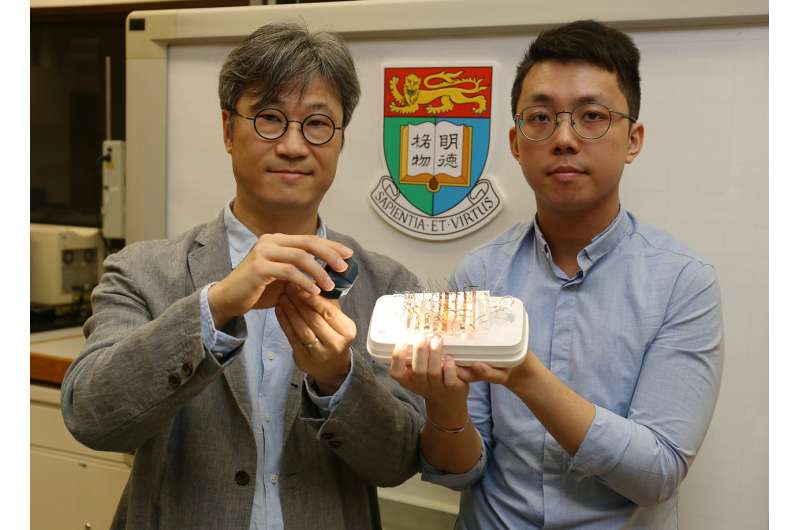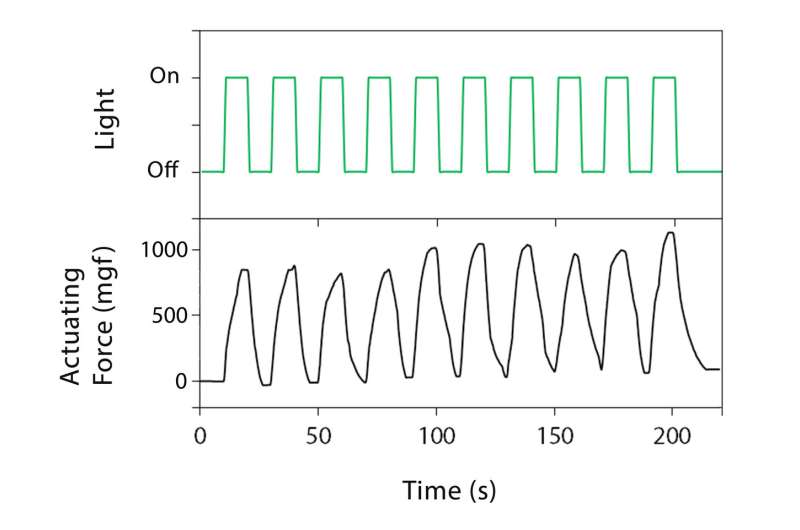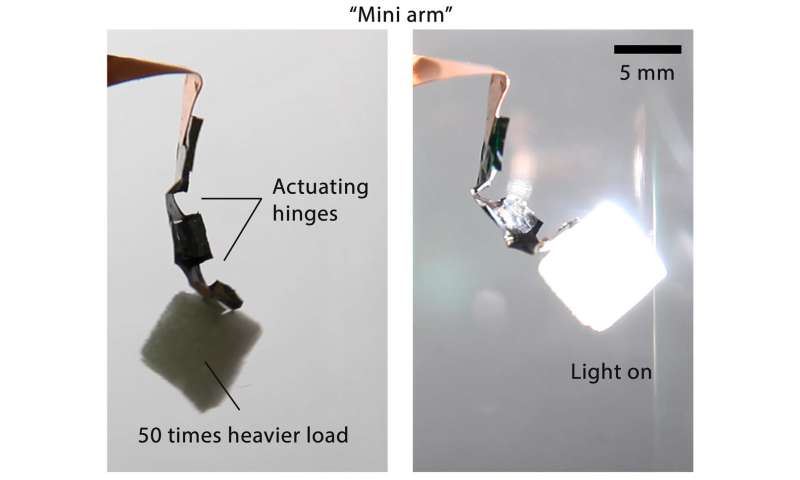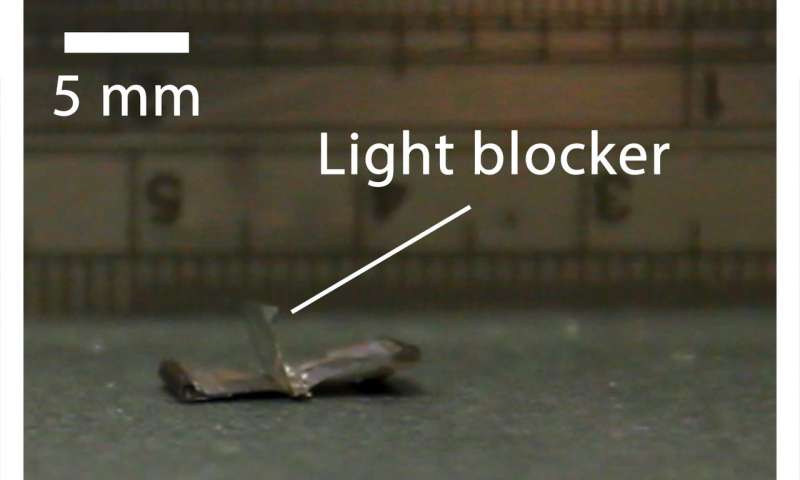Team invents world's first nickel-hydroxide actuating material that can be triggered by both light and electricity

Over the past 30 years, researchers have studied actuating materials that can reversibly change their volume under various stimuli in order to develop micro- and biomimetic robots, artificial muscles and medical devices.
A mechanical engineering team led by Professor Alfonso Ngan Hing-wan, Chair Professor in Materials Science and Engineering, and Kingboard Professor in Materials Engineering, Faculty of Engineering, the University of Hong Kong (HKU) published an article in Science Robotics on 30 May 2018 (EST) that introduces a novel actuating material—nickel hydroxide-oxyhydroxide—that can be powered by visible light, electricity, and other stimuli. The actuation can be instantaneously triggered by visible light to produce a fast deformation and exert a force equivalent to 3000 times its own weight. The material cost of a typical actuator is as low as HKD 4 per cm2 and can be easily fabricated within three hours.
Light-induced actuating materials are highly desirable because they enable wireless operation of robots. However, very few light-driven materials are available, and their material and production costs are high, hindering their development for actual applications.
Developing actuating materials was identified as No. 1 among the 10 grand challenges of Science Robotics. Research in actuating materials can radically change the concept of robots which are now mainly motor-driven. Therefore, materials that can be actuated by wireless stimuli including a change in temperature, humidity, magnetic fields and light is one of the main research focus in recent years. In particular, a material that can be actuated by visible light and produces strong, quick and stable actuation has never been achieved. The novel actuating material system, nickel hydroxide-oxyhydroxide, that can be actuated by visible light at relatively low intensity to produce high stress and speed comparable to mammalian skeletal muscles has been developed in this research initiated by engineers in HKU.
In addition to its visible light actuation properties, this novel material system can also be actuated by electricity for integration into existing robotics technology. It is also responsive to heat and humidity changes so that they might potentially be applied in autonomous machines that harness these tiny energy changes in the environment. Because the major component is nickel, the material cost is low.
The fabrication only involves electrodeposition, which is a simple process, and the time required for the fabrication is around three hours. Therefore, the material can be easily scaled up and manufactured in industry.
The newly invented nickel hydroxide-oxyhydroxide responds to light almost instantaneously and produces a force corresponding to about 3000 times its own weight (Figure 1).
When integrated into a well-designed structure, a "mini arm" made by two hinges of actuating materials can easily lift an object 50 times of its weight (Figure 2). Similarly, by utilizing a light blocker, the researchers made a mini walking bot in which only the front leg bends and straightens alternatively and therefore moves under illumination such that it can walk toward the light source (Figure 3). These demonstrate that future applications in micro-robotics, including rescue robots, are possible.

The evidences above revealed that this nickel hydroxide-oxyhydroxide actuating material can have different applications in the future, including rescue robots or other mini-robots. The intrinsic actuating properties of the materials obtained from the research show that by scaling up the fabrication, artificial muscles comparable to those of mammalian skeletal muscles can be achieved.
From a scientific point of view, this nickel hydroxide-oxyhydroxide actuating material is the world's first material system that can be actuated directly by visible light and electricity without any additional fabrication procedures. This also opens up a new research field on light-induced actuating behaviour for hydroxide-oxyhydroxides, which has never been reported before.
-

Figure 2. A mini arm with two actuating hinges lifting a weight 50 time heavier than itself under light. Credit: The University of Hong Kong -

Figure 3. A mini walking-bot with the “front leg” straightened under light, while the light blocker blocks the light illumination on the “back leg” and therefore it remains curled. Therefore, the walking-bot walks towards the light source. Credit: The University of Hong Kong
More information: K. W. Kwan et al. Light-stimulated actuators based on nickel hydroxide-oxyhydroxide, Science Robotics (2018). DOI: 10.1126/scirobotics.aat4051
Journal information: Science Robotics
Provided by The University of Hong Kong





















